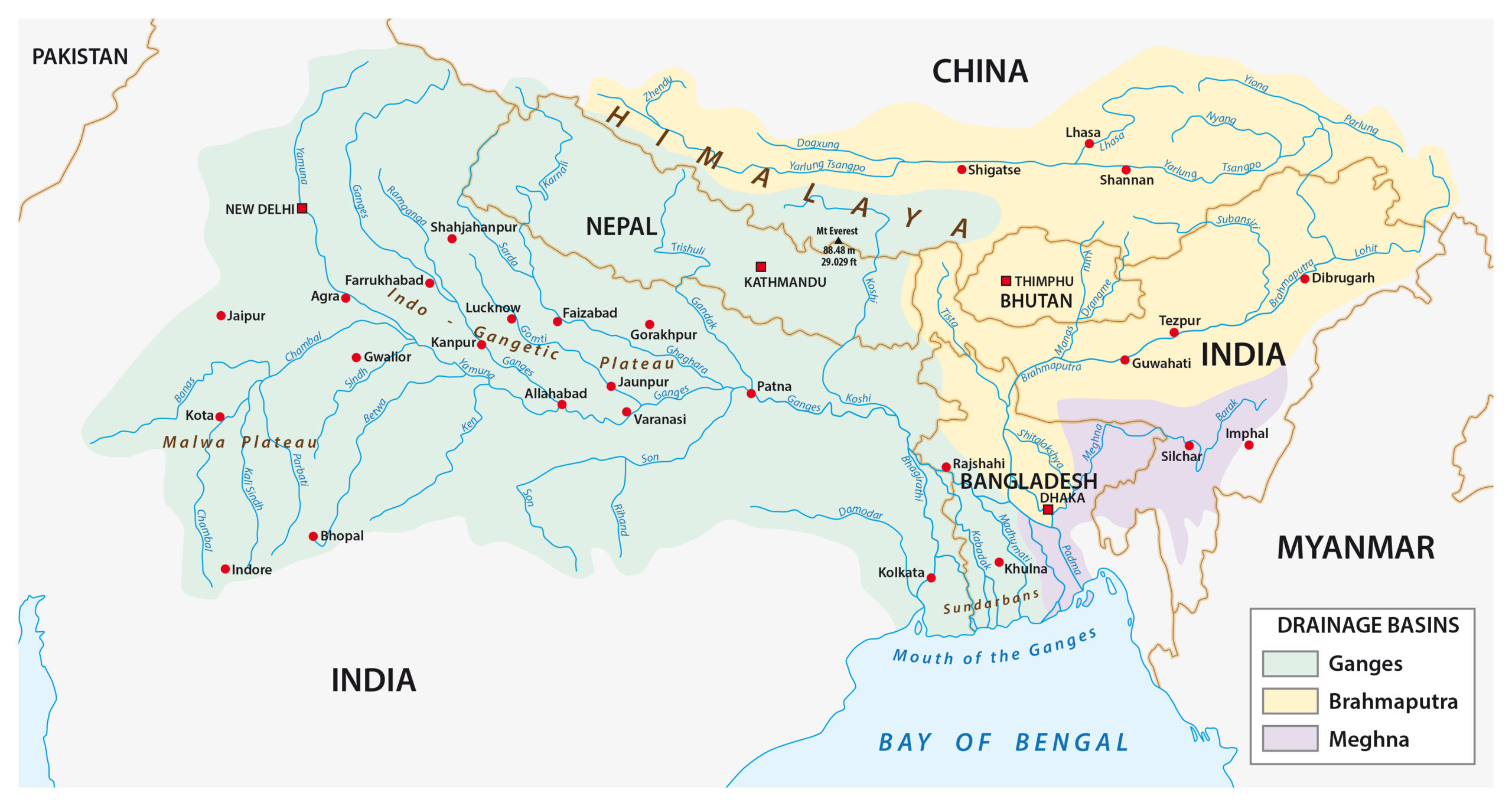
Bangladesh, often considered economically and politically tethered to India due to their 4,000 km shared border, is now positioned to redefine its geopolitical narrative. For years, the common belief has been that Bangladesh’s geography handicaps its independence, primarily tying its economic and security prospects to its dominant neighbor. However, a more in-depth examination reveals that Bangladesh’s geographic positioning provides significant strategic advantages. This article will explore how Bangladesh can reduce its reliance on India by leveraging its access to the Bay of Bengal and its position as a bridge between South and Southeast Asia.
One of Bangladesh’s greatest assets is its coastline along the Bay of Bengal. Spanning 580 km, this coastal region offers access to some of the world’s busiest shipping lanes, connecting South Asia with Southeast Asia, the Middle East, and beyond. Bangladesh’s geographical location presents enormous potential to become a maritime hub for trade and commerce. It also opens up diplomatic avenues for Bangladesh to engage with a variety of regional powers without relying solely on India. Bangladesh’s strategic placement between South Asia and Southeast Asia allows it to act as a vital link for regional connectivity. By enhancing its transport infrastructure and modernizing its ports, Bangladesh can position itself as a key player in international trade, especially between ASEAN (Association of Southeast Asian Nations) and SAARC (South Asian Association for Regional Cooperation) member states. This positioning also offers potential for greater cultural and economic exchange, establishing Bangladesh as a central bridge for integrating these two major trade blocs.
For Bangladesh to unlock its full potential, it must actively diversify its foreign policy and diplomatic relationships. Over-reliance on India for security and economic opportunities limits the country’s strategic growth and independence. There is immense potential for Bangladesh to foster deeper relationships with Southeast Asian countries such as Myanmar, Thailand, and Vietnam, which are ripe for trade partnerships and regional cooperation. These nations, which form a part of ASEAN, provide opportunities for market access, foreign direct investment, and shared regional security arrangements.
Additionally, Bangladesh can further strengthen its relations with China, a major global power and economic partner. China’s Belt and Road Initiative (BRI) has already made significant inroads in Bangladesh, providing opportunities for infrastructure development and technology transfer. Similarly, Japan, another economic powerhouse, offers technology partnerships, investments in high-tech industries, and development aid, which could be beneficial for Bangladesh’s growth trajectory. Both of these relationships allow Bangladesh to reduce its dependency on India and diversify its trade partnerships. Furthermore, enhancing ties with Western countries, including the European Union and the United States, is crucial. Western nations represent significant opportunities for trade, foreign direct investment, and development aid. Their involvement would provide Bangladesh with a counterbalance to its economic reliance on India, especially through the diversification of export markets, particularly in the textile industry.
Bangladesh’s coastal resources provide significant potential for economic growth. The Bay of Bengal is rich in marine resources, particularly fisheries and aquaculture, which could enhance food security and generate significant revenue. Sustainable exploitation of these resources, coupled with modernization of the fishing industry, could contribute immensely to rural development and poverty reduction. Additionally, Bangladesh has untapped potential in offshore energy exploration. The country is thought to hold considerable oil and gas reserves in the Bay of Bengal. Exploring and utilizing these resources could bolster Bangladesh’s energy security and reduce its dependence on imported energy, especially from India. This would provide not only economic benefits but also a strategic advantage, allowing Bangladesh to meet its domestic energy needs while negotiating from a position of strength in regional geopolitics.
Bangladesh’s location has not escaped the notice of global powers, particularly China and India, both of which are competing for influence in the region. Bangladesh’s involvement in China’s BRI has brought it considerable investment in infrastructure, signaling a growing economic alignment with Beijing. Simultaneously, Bangladesh’s cautious engagement in Indo-Pacific strategies, led by the United States and its allies, demonstrates its ability to maintain neutrality while balancing competing regional interests. One of the most significant developments in Bangladesh’s geopolitical strategy is its potential inclusion in BRICS (Brazil, Russia, India, China, and South Africa). Joining BRICS would further solidify Bangladesh’s rising geopolitical importance and offer it a platform for greater economic cooperation with emerging powers. This shift in Bangladesh’s foreign policy direction could reduce its dependency on India and signal a more assertive, independent role in global affairs.
Far from being a liability, Bangladesh’s geography offers a wealth of opportunities for economic growth and diplomatic influence. By shifting its focus from India and embracing a broader range of international partnerships, Bangladesh can carve out a stronger and more independent role on the global stage. Through maritime development, regional connectivity, and diversified foreign policy, Bangladesh can significantly enhance its strategic and economic standing while securing its national interests.
